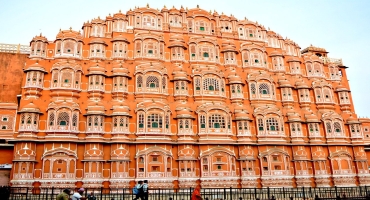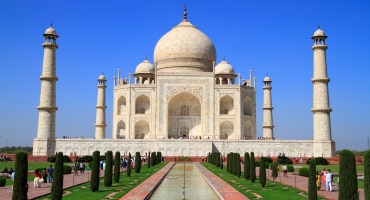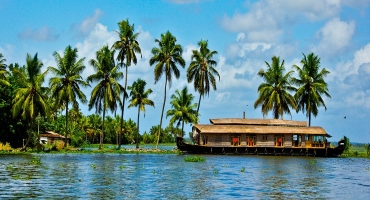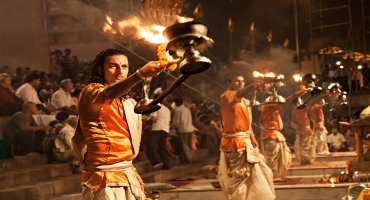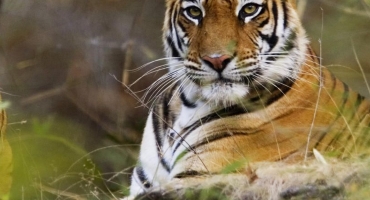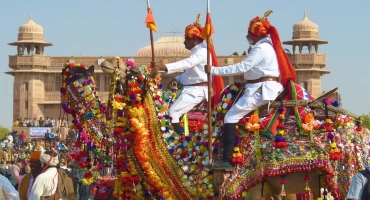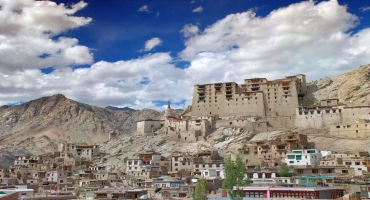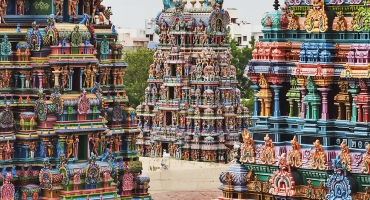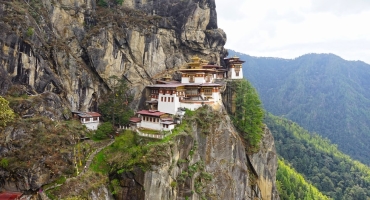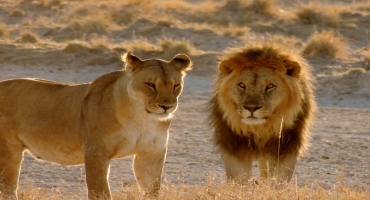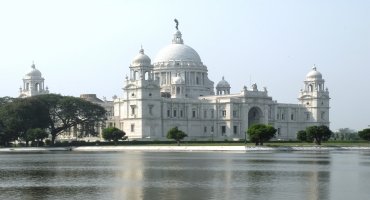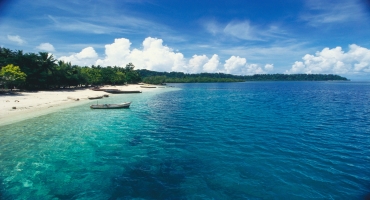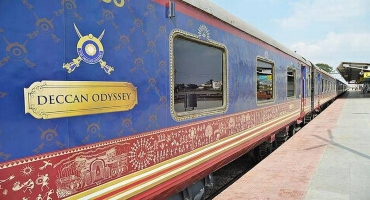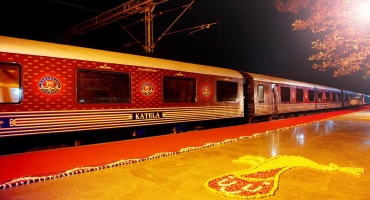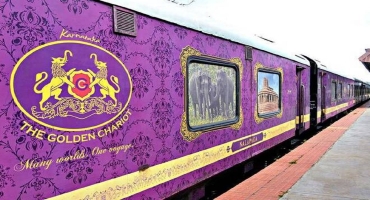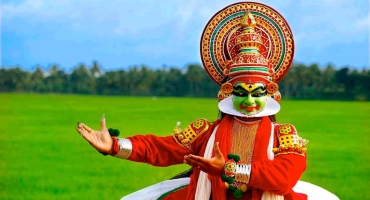
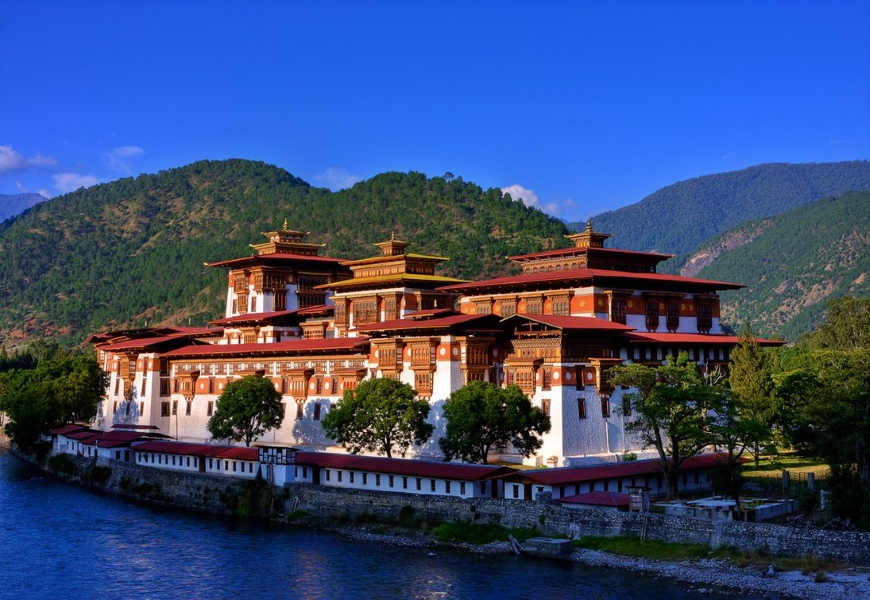
Day 1 : Arrive Kolkata
Arrive in Kolkata (formerly Calcutta), founded as an East India Company trading post, it was India's capital under the British Raj from 1773â1911. Today itâs known for its grand colonial architecture, art galleries and cultural festivals. Itâs also home to Mother House, headquarters of the Missionaries of Charity, founded by Mother Teresa, whose tomb is on site
Day 2 : Kolkata
Explore âCity of Joyâ.Visit Victoria Memorial, a museum thatâs home to a vast collection of sculptures, manuscripts, paintings and other items from the time of British rule. Also visit St. Paulâs Cathedral, Tagore House and The Mother House. Evening explore Dalhousie Square in a walking tour
St. Paulâs Cathedral : Built in 1847, this is said to be the largest cathedral in Indiaâs City of Joy. Featuring gothic architecture and stained-glass windows, the pristine-white cathedral was built to tend to Calcuttaâs growing European community in the early-19th century.
Tagore House (also known as âJorasanko Thakurbari) : The ancestral home of Rabindranath Tagore has now been turned into a museum, which dedicated to his life and works. Spread on an area of 35000 square m, it was constructed in the year 1785.
The Mother House of the Missionaries of Charity, is the headquarters of the international religious congregation of the Missionaries of Charity. It has been home to Mother Teresa and her sisters from February 1953 to the present day. It is here that Mother lived, prayed, worked, and guided her religious family of sisters spread across the world. It is here that her body was laid to rest
Day 3 : Kolkata - Paro (by flight ) - Thimpu (by surface)
You will be transferred to airport for your flight to Paro, the journey offers fascinating views and an exciting descent into the Kingdom. Bhutanâs first gift to you as you disembark from the aircraft will be cool, clean fresh mountain air. After immigration formalities and baggage collection, you will be met by our representative, and afterwards drive to Thimphu, the capital town of Bhutan with enroute stop at Chuzom, the confluence of Thimphu and Paro rivers. Three different style of stupas; Tibetan, Nepalese and Bhutanese adorn this confluence. Shortly before reaching Chuzom, you will see on your left Tschogang Lhakhang, âthe temple of the excellent horseâ. It is a private temple, built in 15th century, as the result of visitation from Balaha, the excellent horse, a manifestation of Chenrezig, the compassionate Buddha
Day 4 : Thimpu
After breakfast, sightseeing in Thimphu valley including visit to the following: The National Library, housing an extensive collection of priceless Buddhist manuscripts; the Institute for Zorig Chusum (commonly known as the Painting School) where students undergo a 6-year training course in Bhutanâs 13 traditional arts and crafts. Later visit Textile Museum, which provides insight into Bhutanâs one of the most distinct art form. Also visit Simply Bhutan, a living museum and studio encapsulating the cultural heritage of the Bhutanese people.
After lunch, take a short drive (15 km) to Pangri Zampa, 16th century one of the oldest monasteries in Bhutan located just north of Thimphu. Here is a monastic school where Buddhist studentâs monks learn Lamaism and astrology based on Buddhist philosophy.
Afterwards visit to Buddha Point (Kuensel Phodrang). Located at a short drive from Thimphu city centre, visitors can get a good overview of the Thimphu valley from the Buddha point (Kuensel Phodrang). You can pay your obeisance and offer prayers to the Buddha, the largest statue in the country and then walk around and take a glimpse of the valley.
King's Memorial Chorten continuously circumambulated by people, murmuring mantras and spinning their prayer wheels. Construction of this landmark was the idea of Bhutanâs third king, His Majesty Jigme Dorji Wangchuk (âthe father of modern Bhutanâ) who has wished to erect monument to world peace and prosperity. Completed in 1974 after his untimely death, it serves both as a memorial to the Late King and as a monument to peace.
Later visit to Trashichhoedzong: This impressive fortress/monastery houses Secretariat building, the throne room of His Majesty, the King and various government offices. It is also the summer residence of Chief Abbot and central monk body.
Day 5 : Thimpu - Punakha
Post breakfast at hotel, Drive to Punakha across Dochula pass (3O8Om). In Bhutan, the passes are marked by a large Bhutanese Chorten and prayer flag. Dochula pass offers the most spectacular view over the high peaks of the eastern Himalayas on a clear day.
Enroute take a short day walking to Chimi Lhakhang (from hotel it is about 15 minutesâ drive till motorable road and then walk starts through paddy fields and villages. This is total about 1½ hour walk, including both way). The Chimi Lhakhang, situated on a hillock in the centre of the valley, also known as the temple of fertility. It is widely believed that couples who do not have children and wanting one, if they pray at this temple, they are usually blessed with a child very soon. The trail leads across rice fields to the tiny settlement of Pana, meaning âfieldâ. A walk through the village near the temple will give you rare glimpses into the daily life and lifestyle of the villagers.
After checking into hotel, proceed to visit Punakha Dzong, a massive structure built at the junction of two rivers. It was the capital of Bhutan until 1955, and still serves as the winter residence of the monk body.
Evening can be spent exploring Punakha village located right on the bank of river.
Day 6 : Punakha
After breakfast; hike up through fields of chilies, cabbages and rice along the banks of the Mo Chhu to Khamsum Yuelley Namgyal Chorten, a stunning monument recently built by the Queens and consecrated in 1999.
Afternoon visit Sangchhen Dorji Lhuendrup Lhakhang nunnery: Perched on a ridge amid pine trees and overlooking valleys of Punakha and Wangdue Phodrang, gleams the magnificent structures of Sangchhen Dorji Lhuendrup Lhakhang (Temple). The temple houses a 14-foot main bronze statue of Avalokiteshvara (Chenrigzig Chagtong Chentong). Other statues include those of Guru Padma Sambawa, Gautama Buddha, Zhabdrung Ngawang Namgyel, Tsela Namsum, the 21 Taras and Tsepamay (Buddha of longevity). The Avalokiteshvara statue, one of the biggest in the country, was the handiwork of entirely local Bhutanese artisans. The temple complex also houses a permanent higher learning and meditation centre for nuns where, apart from religious trainings, it provides life skill training such as tailoring, embroidery, statue making and thangka painting.
Day 7 : Punakha - Paro
After breakfast drive back to Paro descending back down from Dochu La, follow the way back up the dramatic Wang Chhu and Paro Chhu river valleys, before crossing through Paro Town towards the north end of the valley, enroute visit Simtokha Dzong, the place of profound tantric teaching, this Dzong now houses a school for the study of the Dzongkha language.
Later in the day after checking into hotel, proceed to visit Ta Dzong, originally built as Watchtower, which now houses National Museum. The extensive collection includes antique Thangkha paintings, textiles, weapons and armour, household objects and a rich assortment of natural and historic artifacts.
Then walk down the trail to visit Rinpung Dzong, meaning (âfortress of the heap of jewelsâ), which has a long and fascinating history. Along the wooden galleries lining the inner courtyard are fine wall paintings illustrating Buddhist lore such as four friends, the old man of long life, the wheel of life, scenes from the life of Milarepa, Mount. Sumeru and other cosmic Mandala.
Day 8 : Paro
After breakfast excursion to Taktshang Monastery (approx. 5 hrs walk): It is one of the most famous of Bhutanâs monasteries, perched on the side of a cliff 900 m above the Paro valley floor. It is said that Guru Rinpoche arrived here on the back of a tigress and meditated at this monastery and hence it is called âTigerâs Nestâ. This site has been recognised as a most sacred place and visited by Shabdrung Ngawang Namgyal in 1646 and now visited by all Bhutanese at least once in their lifetime. On 19 April, 1998, a fire severely damaged the main structure of building but now this Bhutanese jewel has been restored to its original splendour.
On the way back to town stop at Drukgyel Dzong, a ruined fortress where Bhutanese warriors fought Tibetan invaders centuries ago. The snowy dome of sacred Chomolhari, "mountain of goddess'' can be seen in all her glory from the approach road to the Dzong.
Along the way, visit the 7th century Kyichu Lhakhang, one of the 108 temples built in the Himalayas by Tibetan King, Songtsen Gampo. The building of this temple marks the introduction of Buddhism in Bhutan.
Evening an exploratory walk around Main Street and market area.
Day 8 : Paro - Kolkata by flight
After breakfast at the hotel, transfer to the airport for your flight to Kolkata. You will be met on arrival and transfer to your hotel
Day 9 : Depart Kolkata
After breakfast at the hotel, transfer to the airport for your flight to your onward destination

